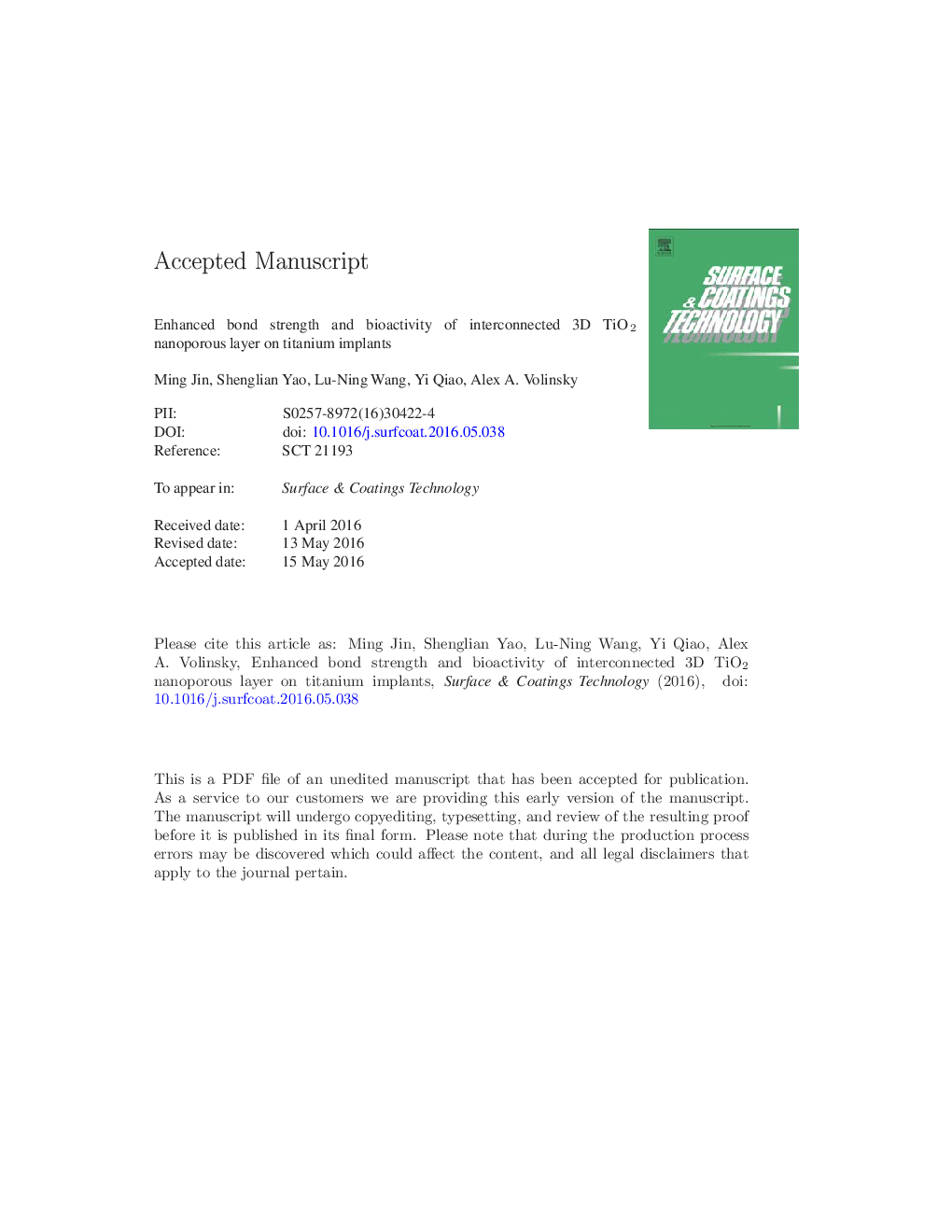| Article ID | Journal | Published Year | Pages | File Type |
|---|---|---|---|---|
| 8025041 | Surface and Coatings Technology | 2016 | 59 Pages |
Abstract
Titanium and its alloys have been extensively used as implant materials due to their excellent mechanical properties, adequate corrosion resistance and good biocompatibility. In this study, an interconnected 3D TiO2 structure on Ti implants is fabricated via anodization method in a fluoride-containing electrolyte with water content larger than 50%. The pore size ranges from 30 to 200 nm with the current density increased from 50 to 100 mA·cm2. Compared with other kinds of porous TiO2 layers, which were fabricated by the same method with different electrolyte composition, the prepared 3D TiO2 structure shows the highest hardness and apparent Young's modulus, which are over 4 times higher than that of the TiO2 nanotube arrays. Moreover, the 3D TiO2 possess the highest adhesion strength as the critical load for the delamination occurred is 0.7 N, while for the nanotube-structured layer and the transition structure, the load are 0.2 and 0.4 N, respectively. Additionally, the 3D TiO2 structure also shows better corrosion resistance than the others. Titanium with 3D oxide layer has also shown good performance in osteogenic cells culturing, since in the cell viability assay, the cells adhered on the 3D oxide layer spread extensively and showed a spindle shape while on the TiO2 nanotube arrays or titanium with transition structure the cells were unfavorable to spread. This work can provide guidelines for improving structural and environmental conditions responsible for modification of Ti surfaces for biomedical applications.
Keywords
Related Topics
Physical Sciences and Engineering
Materials Science
Nanotechnology
Authors
Ming Jin, Shenglian Yao, Lu-Ning Wang, Yi Qiao, Alex A. Volinsky,
